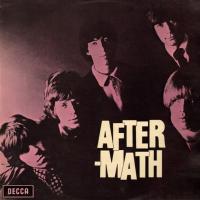When I paint My Masterpiece: 1966, Par2
Posted On: 5/20/16
Written By: Stone Scruggs
*Click images below to view larger versions.
Old Gods, Almost Dead (Again): Bob Dylan is 75 this Wednesday 25. So the annual Fager’s Island birthday concert, hosted by and starring the inevitable, venerable, well respected man about town Nate Clendenen and Denenmusic Productions, is perhaps the most must attend yet. You'll hear selections from Blonde On Blonde, the third in a legendary triumvirate only surpassed by two other legends: The Beatles and The Stones. The former made theirs contemporaneously with Dylan, the latter would begin their epoch of renascence in two years. But England's Newest Hitmakers were also making some of their finest music, as it would culminate in their first full all original album after three years of introducing a clueless America to our own unsung blues treasures: Muddy Waters, Howlin Wolf, Jimmy Reed, Willie " I Am The Blues" Dixon.
But back to Bob. Having finally plugged in with his first essential release (read: post doctrinaire acoustic folk: yawn) Bringing It All Back Home, followed by his second, Highway 61, February 1966 brought The Artist to Nashville to finish what was started back home in New York in November. A double album was the result, what Dylan described as " the closest I ever got to the sound in my mind", or more poetically, "that thin wild mercury sound". If anyone cares, my personal fave is perhaps the lightest, most blithesome of the marathon sessions - if not the entire 65-6 canon - "Brand New Leopardskin Pillbox Hat". But admittedly, I’m a reserved Dylan fan: this was his only era that evokes my enthusiasm. Sorry, Nate. Of apposite interest: last year's Bootleg Series release, Number Twelve: 1965-6 captures most of these songs in early stages that, unlike most demos, prove inferior to the released versions. Still well worth at least two listens.
By now Dylan had inspired The Byrds' formation, if not The Grateful Dead's - who it should be said were concurrently recording their three-song second demo in Los Angeles, as The Warlocks - and the aforementioned Beatles and Stones. 1965's Rubber Soul was the maturation of the moptops, inspiring Brian Wilson to top it with his Pet Sounds (which will take a full article 2BA, so heads up to any reader of this column tiring of my Beach Boys idolatry; as for those weary of my Stones/Keef obsession, prepare to beware). Which in turn would inspire Lennon/McCartney to Sgt Pepper/Magical Mystery Tour, which subsequently inspired Wilson to Smile, and Jagger/Richard to Their Satanic Majesties Request - yes, essential and underrated, although current revisionism is rating it, finally, but then in my biased eyes they did you no wrong between 65 and 74.
Point being, the most influential music was made in this period. And I haven't even mentioned The Velvet Underground, the other most importantly influential (as in, GOOD bands started because of them) group active at the time, and David Bowie (ditto), who incidentally recorded, with session musicians, the fine, if marginal, "I Dig Everything" at this time.
But back to Beatles. The UK, while arguably ultimately being a year ahead and a step before the US with regard to taste, remained a singles market right through the nineties Suede/Oasis/Blur (note order, which indicates musical hierarchy; this is the final word on the matter. OK.) Britpop era. The best, and I don’t think I’ll get an argument here, doublesided single London ever released in the sixties - before The Smiths saved singles in the eighties - (save for "We Love You"/"Dandelion" or "Jumpin Jack Flash"/"Child Of The Moon") was "Paperback Writer"/"Rain". This would be the advance release from the April/May Revolver sessions that continued with my personal fab fave Beatle's "The Taxman" and "Love You To" and "I Want To Tell You". By now The Beatles, despite the credits, were recording solo compositions which only recruited bandmates as side musicians; the benumbingly brilliant "She Said" was composed by John on acoustic guitar and organ; Paul's "For No One", which invented chamber pop, was composed pon bass and keys. And of course, "Tomorrow Never Knows" was self aware in its prescience. It would be all John if Paul hadn't contributed the mind blowing tape loops. Turn off your mind, relax and float downstream.
Lennon was indecorous regarding his accusations of The Rolling Stones ripping off The Beatles. Still...Aftermath followed Rubber Soul. Between The Buttons followed Revolver. And famously Their Satanic Majesties Request followed Sergeant Peppers Lonely Hearts Club Band. Amd that’s all I have to say about that. Sour grapes.
December 1965: The Rolling Stones record an album’s worth of MicknKeith tunes at RCA in Hollywood; still they have an arsenal of at least another. March 1966: they record still another dozen. This includes what, again, contrary to the credits, is primarily a Brian Jones - composed on dulcimer - track, "Lady Jane", in all its attendant period stateliness. And all. "Under My Thumb" was the blonde one on marimba and piano. Don't believe the hype, the cred should’ve said Jagger/Richard/Jones/Nitzsche, the latter for their brilliant producer/arranger/harpsichordist Jack Nitzsche. Elsewhere, Jones shone on "Out Of Time"'s defining marimba, "Paint It Black"'s sitar, "High And Dry"'s harmonica - at this stage he was still mentor to Mick's apprenticeship - the eerie (lyrically- Mick was beginning to get it) "Flight 505"'s lead lines, the similarly unsettling "I Am Waiting"'s dulcimer.
Jones would make vital contributions to Between The Buttons at the end of the year, but for his artistic input, Aftermath is as much his album as... you know those two.
Blonde On Blonde. Revolver. Aftermath.
Pet Sounds.
And still more to come.

